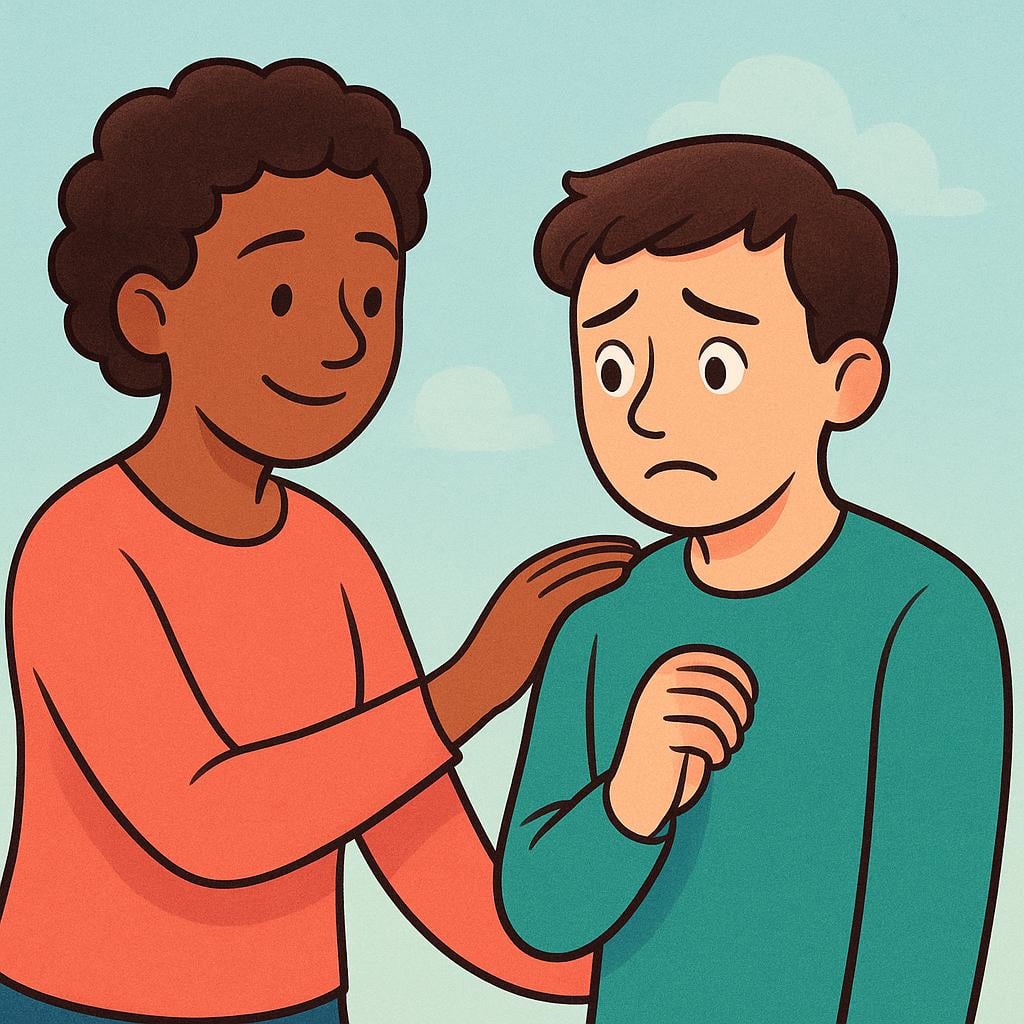tranquilo
/tran-KEE-loh/
calm

As an adjective, tranquilo means calm, quiet, or easy-going, describing a person, place, or situation.
tranquilo(Adjective)
calm
?describing a person's state or personality
quiet
?describing a place, like a street or town
,peaceful
?describing a situation or environment
,easy-going
?describing a personality
📝 In Action
Mi abuelo es un hombre muy tranquilo.
A1My grandfather is a very calm/easy-going man.
Este es un barrio tranquilo por la noche.
A2This is a quiet neighborhood at night.
Después del examen, me siento más tranquilo.
A2After the exam, I feel more calm.
Necesito unas vacaciones tranquilas en la playa.
B1I need a peaceful vacation on the beach.
💡 Grammar Points
Matching Endings: tranquilo vs. tranquila
This word changes to match the person or thing it describes. Use 'tranquilo' for masculine things (un día tranquilo) and 'tranquila' for feminine things (una persona tranquila).
Describing Personality vs. Feeling: 'Ser' vs. 'Estar'
Use 'ser tranquilo' to talk about someone's general personality (He is a calm person). Use 'estar tranquilo' to describe how someone feels right now (He is calm at the moment).
❌ Common Pitfalls
Forgetting to change the ending
Mistake: "La ciudad es muy tranquilo por la mañana."
Correction: La ciudad es muy tranquila por la mañana. Because 'ciudad' (city) is a feminine word, the adjective describing it must also end in '-a'.

Used as an interjection, ¡Tranquilo! (or ¡Tranquila!) is a common, informal command meaning 'Calm down!' or 'Don't worry!'.
tranquilo(Interjection)
Calm down!
?a command to reassure someone who is upset or worried
Don't worry!
?reassurance
,Take it easy.
?reassurance
,It's okay.
?reassurance
📝 In Action
¡Tranquilo! No es para tanto.
A2Calm down! It's not a big deal.
Mamá, se me cayó un vaso. —Tranquila, hija, no pasa nada.
A2Mom, I dropped a glass. —It's okay, dear, it's nothing.
¿Estás seguro de que podemos terminar a tiempo? —Sí, tranquilo, tenemos tiempo.
B1Are you sure we can finish on time? —Yeah, don't worry, we have time.
⭐ Usage Tips
A Quick Way to Reassure
Just saying '¡Tranquilo!' or '¡Tranquila!' is a very natural way to tell a friend to relax. You're basically saying '(Be) calm!'. Remember to match the ending to the person you're talking to.
✏️ Quick Practice
💡 Quick Quiz: tranquilo
Question 1 of 1
Your friend Ana is very worried about an exam. What's the most natural way to tell her 'Calm down!'?
📚 More Resources
Frequently Asked Questions
What's the difference between 'tranquilo' and 'calmado'?
They are very similar! 'Tranquilo' can describe a permanent personality trait ('él es tranquilo' - he's an easy-going person) or a temporary feeling ('él está tranquilo' - he's calm right now). 'Calmado' is more often used for a temporary feeling, often implying someone *has become* calm after being upset ('ya está más calmado' - he's calmer now).
Can I say 'tranquilo' to mean 'you're welcome'?
Yes, in some regions, especially in Central America and the Caribbean, it's very common to reply with 'Tranquilo/a' after someone says 'gracias'. It's like saying 'no problem' or 'don't worry about it'.